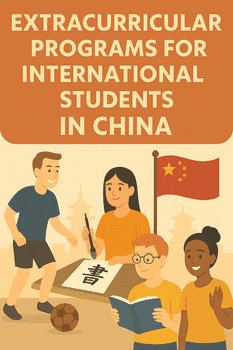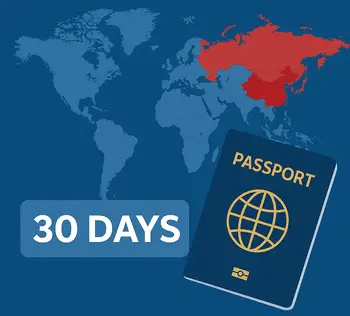
Studying in China extends far beyond classroom walls, offering international students rich opportunities for cultural immersion, skill development, and networking.
This comprehensive guide explores the diverse extracurricular landscape across China’s educational hubs, featuring current programs, regional differences, and practical advice for maximizing your experience in 2025.
The Evolving Landscape of Student Activities in China
The extracurricular scene for international students has transformed significantly since 2023, with universities and organizations adapting to post-pandemic realities while embracing digital innovation.
According to the China Education Association for International Exchange, participation in structured extracurricular programs among international students has increased by 34% since 2023, reflecting their growing importance in the overall educational experience.
| Year | Key Trends in Extracurricular Activities |
|---|---|
| 2023 | Resumption of in-person activities; hybrid models common |
| 2024 | Expansion of university-enterprise partnerships; growth in career-focused programs |
| 2025 | Integration of AI-assisted language exchange; increased cross-university collaboration |
Source: Annual Report on International Student Activities in China, Ministry of Education, 2025
Regional Differences: Extracurricular Opportunities by City
Extracurricular experiences vary dramatically depending on your host city, with each region offering distinct advantages:
| City | Extracurricular Strengths | Notable Programs | Unique Opportunities |
|---|---|---|---|
| Beijing | Political & cultural immersion; historical exploration | Tsinghua Global Leadership Program; PKU Cultural Ambassadors | Access to government institutions; traditional cultural preservation activities |
| Shanghai | Business networking; international collaboration | Fudan-MIT Innovation Lab; SJTU Industry Connect | Corporate mentorship programs; multinational company visits |
| Guangzhou | Trade & manufacturing exposure; Cantonese culture | Canton Fair Volunteer Program; Sun Yat-sen University Cross-Cultural Business Club | Factory tours; Greater Bay Area integration activities |
| Chengdu | Traditional arts; food culture; nature exploration | Sichuan University Panda Conservation Program; Southwest Jiaotong University Culinary Exchange | Tea culture immersion; Sichuan Opera workshops |
| Hangzhou | Digital economy; e-commerce; environmental initiatives | Zhejiang University-Alibaba Digital Economy Fellows; West Lake Conservation Projects | E-commerce platform internships; digital entrepreneurship bootcamps |
“The extracurricular opportunities in Shanghai opened doors I never imagined. Through the Fudan-MIT Innovation Lab, I connected with tech startups and eventually secured a position at a multinational company’s Shanghai office.” — Maria, Brazilian graduate student at Fudan University
Language Exchange Programs: Beyond Basic Conversation
Language exchange remains the most popular extracurricular activity, with 78% of international students participating in some form of language partnership program.
Top-Rated Language Exchange Programs (2025)
| Program Name | Host Institution/Organization | Format | Cost | Application Deadline | Language Requirements |
|---|---|---|---|---|---|
| Language Partner Program | Beijing Language and Culture University | Weekly 1:1 meetings + monthly group activities | Free | September 5 (Fall); February 10 (Spring) | None |
| Shanghai Language Exchange | Community organization | Café meetups 3x weekly; structured conversation topics | ¥50/month membership | Rolling admission | None |
| ChatterBox | Private language company | AI-matched partners + guided conversation app | Free basic; ¥88/month premium | Anytime | HSK 2+ recommended |
| Tandem China | Multi-university initiative | Cross-university language partnerships | Free | Two weeks before semester start | None |
New in 2025: Several universities have introduced AI-assisted language exchange platforms that provide real-time feedback on pronunciation and grammar while facilitating conversations between Chinese and international students. The LinguaBridge program at Nanjing University has shown particularly promising results, with participants achieving 40% faster improvement in conversational fluency compared to traditional exchange formats.
“The structured approach of ChatterBox helped me break through my intermediate plateau. The weekly themes pushed me to learn vocabulary I wouldn’t normally encounter, and the recording feature let me review my progress.” — Ahmed, Egyptian student at XJTLU
Sports & Athletics: Staying Active Across China
Sports programs offer excellent opportunities for integration with local students while maintaining physical and mental well-being.
Popular Sports Programs by Participation Rate
| Sport | University Programs | Community Leagues | Seasonal Availability | Average Cost |
|---|---|---|---|---|
| Basketball | 92% of universities have international teams | City leagues in 15+ major cities | Year-round (indoor) | Free-¥200/semester |
| Football/Soccer | 88% of universities have international teams | China International Football League in 8 cities | March-November | ¥300-800/season |
| Badminton | 95% of universities have courts and clubs | Limited community options | Year-round (indoor) | ¥50-100/month |
| Martial Arts | 76% of universities offer Tai Chi, Kung Fu classes | Traditional schools welcome foreigners | Year-round | ¥500-2000/course |
| Hiking/Outdoor | 65% of universities have outdoor clubs | China Hikers in major cities | Spring/Fall optimal | ¥100-500/trip |
Source: China University Sports Federation Annual Report, 2025
Regional Standouts:
- Beijing: The Capital International Students Games held each May features 12+ sports and participants from 30+ universities
- Shanghai: Shanghai Ultimate Frisbee League has dedicated divisions for international students
- Chengdu: University-sponsored weekend hiking trips to nearby mountains include cultural components
- Xiamen: Coastal universities offer sailing and water sports programs rarely found inland
Cultural Immersion: From Observer to Participant
Cultural programs have evolved beyond passive observation to emphasize active participation and skill development.
Highly-Rated Cultural Programs (2025)
| Program | Location | Format | Duration | Cost | Application Process |
|---|---|---|---|---|---|
| Traditional Arts Immersion | China Academy of Art, Hangzhou | Weekly workshops in calligraphy, painting, ceramics | Semester-long | ¥1,200 | Online application 1 month before semester |
| Culinary China | Multiple cities | Cooking classes + market tours + food history | 8-week program | ¥2,500 | Rolling admission |
| Beijing Opera Workshop | National Academy of Chinese Theatre Arts | Makeup, movement, vocal training | 10 sessions | ¥1,800 | Interview required |
| Tea Culture Certificate | China Tea Museum, Hangzhou | Comprehensive study of tea varieties, ceremony, history | 12 weeks | ¥3,000 | HSK 3+ required |
| Festival Immersion Project | Nationwide | Participation in seasonal festival preparations | Varies by festival | ¥200-500 per festival | 2 weeks advance registration |
Seasonal Cultural Opportunities:
| Season | Key Festivals/Events | Best Activities for International Students |
|---|---|---|
| Spring | Lunar New Year, Lantern Festival, Qingming | Family homestay programs; lantern making workshops; community celebrations |
| Summer | Dragon Boat Festival, Chinese Valentine’s Day | Dragon boat racing teams; traditional food preparation |
| Autumn | Mid-Autumn Festival, National Day | Mooncake making; cultural performance opportunities |
| Winter | Winter Solstice, Chinese New Year preparations | Dumpling making workshops; Spring Festival couplet writing |
“The Festival Immersion Project completely transformed my understanding of Chinese culture. Participating in preparations for the Mid-Autumn Festival with a local family in Suzhou gave me insights no textbook could provide.” — Carlos, Chilean student at Suzhou University
Career Development & Professional Networking
Career-focused extracurriculars have seen the most significant growth since 2023, with universities responding to international students’ desire for professional opportunities in China.
Top Career Development Programs
| Program | Organizing Institution | Focus | Format | Notable Outcomes |
|---|---|---|---|---|
| China Career Boost | Multi-university consortium | Resume building, interview skills, work culture | 6-week course + mentorship | 72% of participants secured internships |
| Shanghai Future Leaders | AmCham Shanghai + universities | US-China business relations | Monthly seminars + company visits | Direct recruitment channel to 45+ multinationals |
| Shenzhen Tech Immersion | Shenzhen Municipal Government | Tech entrepreneurship | Bootcamp + incubator access | 12 student startups funded in 2024 |
| Belt & Road Talent Program | Ministry of Commerce | International trade | Certification course + internship | Priority for MOFCOM internships |
Source: China Education Association for International Exchange, 2025
Work Permit Pathways: Recent policy changes have created more opportunities for international students to work in China after graduation. According to the State Administration of Foreign Experts Affairs, participation in recognized career development programs can earn points in the work permit application system.
| Activity | Work Permit Points | Documentation Required |
|---|---|---|
| Certified internship | 5-10 points | Completion certificate + supervisor evaluation |
| Industry competition award | 5-15 points | Award certificate + project documentation |
| Published research/project | 10-20 points | Publication evidence + university verification |
| Entrepreneurship program | 10-15 points | Program completion + business plan |
Volunteer & Community Engagement
Volunteering provides meaningful cultural exchange while developing valuable skills and connections.
Established Volunteer Programs for International Students
| Program | Focus Area | Time Commitment | Application Process | Impact Metrics |
|---|---|---|---|---|
| Green China Initiative | Environmental conservation | Weekend projects | Online registration | 15,000+ trees planted by student volunteers (2024) |
| Migrant Children Education | Educational support | 2-4 hours weekly | Interview + training | Serves 3,000+ children across 12 cities |
| Elder Care Bridge | Senior citizen support | Flexible scheduling | WeChat registration | Cultural exchange for 5,000+ seniors annually |
| Heritage Preservation Volunteers | Cultural site maintenance | Project-based | Application + interview | Contributed to 8 UNESCO site preservation projects |
Digital Volunteering Options: For students with limited time or mobility, digital volunteering has emerged as a popular alternative. The China Digital Volunteer Network coordinates translation, social media management, and online tutoring opportunities that can be completed remotely.
“Volunteering with the Migrant Children Education program in Beijing was the highlight of my study abroad experience. Teaching English to migrant workers’ children twice a week gave me a perspective on China I would never have gained otherwise.” — Sophia, American student at Peking University
Digital Integration: Essential Apps and Platforms
Navigating China’s digital ecosystem is essential for accessing extracurricular opportunities.
Must-Have Apps for Extracurricular Engagement
| App | Primary Function | English Interface? | Key Features for Activities |
|---|---|---|---|
| Communication & mini-programs | Partial | Official accounts of universities; event registration; payment for activities | |
| Xiaohongshu (Red) | Social discovery | Partial | Activity recommendations; reviews of programs; community groups |
| Alipay | Payments & mini-programs | Yes | Payment for activities; ticket purchasing; registration for events |
| Didi | Transportation | Yes | Getting to off-campus activities; group ride coordination |
| Damai | Event tickets | Limited | Cultural performances; sports events; exhibition tickets |
| BonApp! | Restaurant discovery | Yes | Foodie events; culinary workshops; group dining coordination |
QR Code Integration: Most extracurricular programs now use WeChat QR codes for registration and communication. The International Student Digital Guide provides a comprehensive collection of QR codes for major programs across universities.
Overcoming Common Challenges
International students face several barriers to extracurricular participation that can be proactively addressed:
| Challenge | Solution Strategies | Resources |
|---|---|---|
| Language barriers | Start with bilingual programs; use translation apps; join language-focused activities first | Language Bridge App; university language partners |
| Cultural differences | Attend orientation workshops; find a Chinese “buddy”; start with observation before participation | Cultural Adaptation Course (free online resource) |
| Time management | Use academic calendar to plan involvement; choose quality over quantity; find activities aligned with academic goals | International Student Planner (specialized for Chinese academic calendar) |
| Administrative hurdles | Seek help from international student office; prepare documents in advance; join university-sponsored programs first | University international student services; China Student Visa Guide |
| Financial constraints | Look for free university programs; apply for activity scholarships; volunteer for fee waivers | International Student Support Fund |
Planning Your Extracurricular Engagement
Timeline for Optimal Participation
| Time Period | Recommended Actions |
|---|---|
| Before arrival | Research university offerings; join pre-arrival WeChat groups; prepare necessary documents |
| First two weeks | Attend activity fairs; join university-sponsored programs; explore campus facilities |
| First month | Start with 1-2 regular activities; focus on language exchange and cultural programs |
| Mid-semester | Add career-focused or specialized activities based on interests and goals |
| University breaks | Participate in intensive programs or travel-based opportunities |
| Final year | Focus on career-building activities; leadership roles; networking events |
Balancing Academic and Extracurricular Commitments: According to a 2024 survey by the China Scholarship Council, international students who dedicate 5-10 hours weekly to structured extracurricular activities report higher overall satisfaction and better academic outcomes than those who participate minimally or excessively.
“I found that joining two quality programs—one language-focused and one related to my major—was the perfect balance. It enhanced my studies rather than competing with them.” — Priya, Indian graduate student at Shanghai Jiao Tong University
Resources for Further Exploration
Official Information Sources
- China Education Association for International Exchange – Comprehensive database of programs and opportunities
- Study in China – Official government portal with extracurricular information
- China Scholarship Council – Resources for scholarship students including approved activities
Community Platforms
- ExpatRiviera – Largest online community for international students in China
- InterNations China – Professional networking platform with student sections
- Smart Shanghai/The Beijinger – City-specific event listings and community boards
University-Specific Resources
Most universities maintain dedicated WeChat official accounts for international student activities. The China University Navigator provides a comprehensive directory of these accounts organized by institution.
Conclusion
Extracurricular involvement is increasingly recognized as a critical component of international education in China, offering pathways to cultural fluency, professional development, and personal growth.
By strategically selecting activities aligned with your goals, maintaining balance with academic commitments, and leveraging digital resources, you can transform your time in China from a study abroad experience into a comprehensive personal and professional development journey.
The most successful international students approach extracurricular activities not as optional add-ons but as integral components of their educational experience in China—opportunities to apply classroom learning, develop cross-cultural competencies, and build relationships that often prove more valuable than formal coursework alone.


